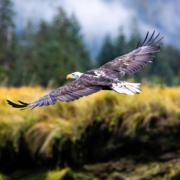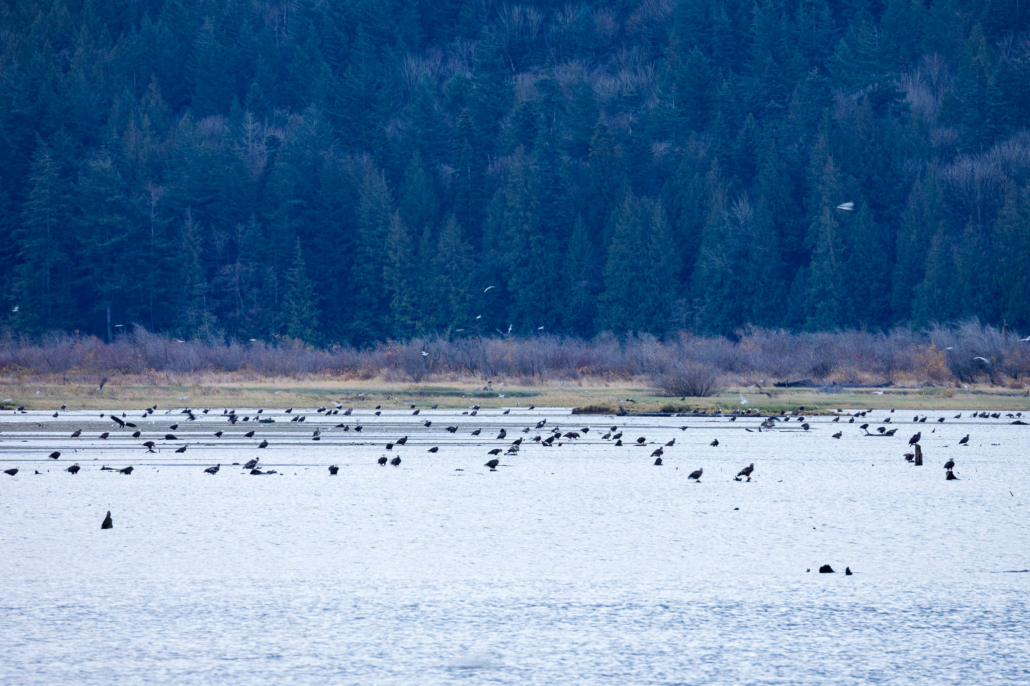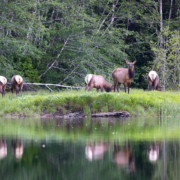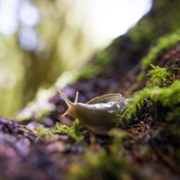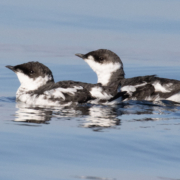Bald Eagles
When visiting a temperate rainforest in British Columbia, look for the bald eagle, a frequent old-growth visitor.
While not bald, the name comes from an older variation of the word, meaning “white-headed.” These majestic creatures can be found searching for their next meal in salmon-spawning rivers, along the ocean shoreline, or nesting high up in the canopies of ancient giants. Bald eagles build the largest nest of any bird in North America. Their nests can reach up to 8 feet (2.5 metres) across and weigh a metric ton! Since they are territorial birds, they will typically return to that same nest year after year for up to decades.
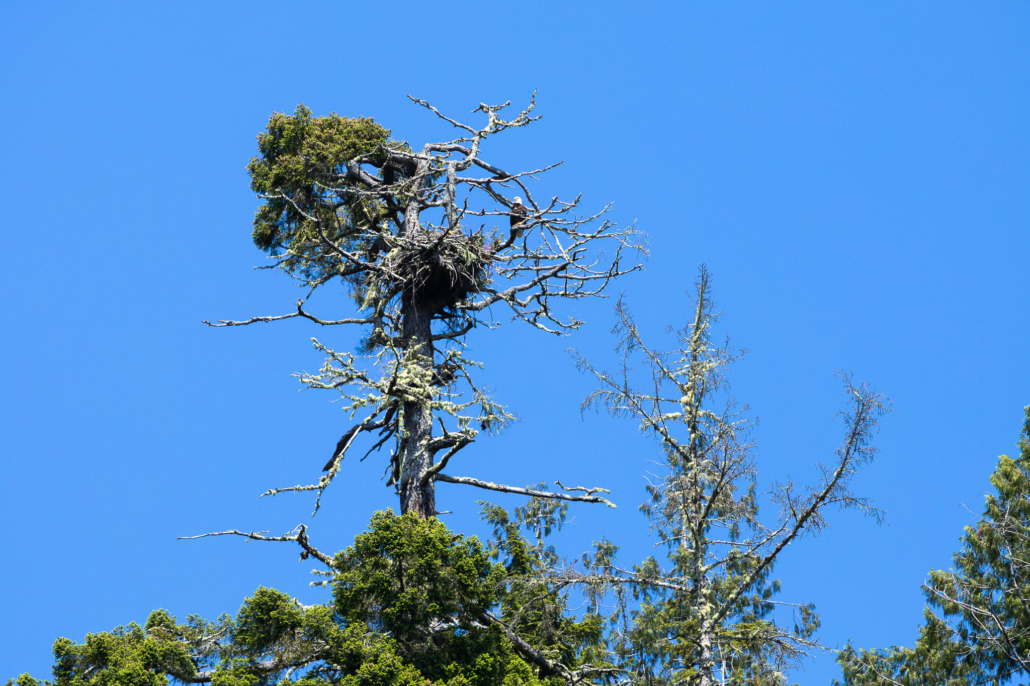
In addition to their enormous wingspans of 6 to 8 feet (1.8 to 2.3 metres), bald eagles are known for their superpower eyesight. They have a 340-degree field of vision, can spot fish under the water’s surface, and can even see into the ultraviolet range. An eagle’s visual acuity is estimated to be 4 to 8 times greater than that of humans. This means that an eagle can see from a distance of 1.6 kilometers what a human with perfect vision can see from only 200 meters away. They also have binocular and monocular vision, allowing them to spot prey from great distances and navigate their environment with remarkable precision.

Along the Chehalis and Harrison Rivers near Agassiz, BC, in the territory of Sts’ailes First Nation, as many as 10,000 bald eagles have been known to congregate in November and December to feed on spawning salmon, making the area home to one of the largest bald eagle concentrations on Earth. It’s an incredible place to view wildlife this time of year! Nearby, at Echo Lake, one of their night-roosting sites, roughly half of the old-growth forests were protected in 2013 as a result of Ancient Forest Alliance’s campaign efforts. The rest of the forests there must now also be preserved.
How does your eyesight compare to an eagle? How many do you think are in this photo from the Harisson-Chehalis River estuary?? Find the answer at the bottom of this page.
Be sure to check out Hancock Wildlife’s live eagle cams and enjoy some of our favourite eagle photos below!
Answer: About 145 eagles can be found in the photo! Wild!

